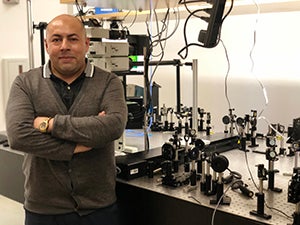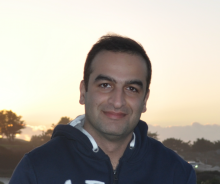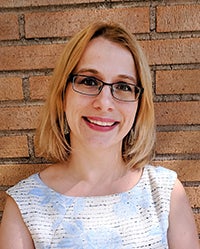Lisa Banner
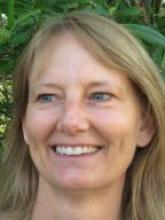
NOT ACCEPTING NEW MENTEES*
Mentor Bio
I received my B.S. in Microbiology from San Diego State University. My interest in the nervous system began when I worked as a research technician in the Neurobiology Department at USC. There, I was exposed to and very involved in basic research. In choosing a graduate program I wanted to learn about molecular biology but still be involved in neuroscience. As a graduate student at USC, I studied the molecular biology of Coronaviruses. These large RNA viruses are responsible for some common colds but some can also infect the nervous system. As a postdoctoral research fellow at Caltech, I was able to apply my background in molecular biology to the study of the nervous system and began studies looking at the role of cytokines in the nervous system. I was able to show that the cytokine LIF, functions as a neural-immune molecule following injury to the nervous system. Upon my arrival at CSUN I began a research program aimed at understanding how cytokines regulate the neural-immune axis using a mouse model of diabetes.
Research Project Title
Determine the role of cytokines in the neural damage that occurs in prediabetes.
Background and Purpose
My laboratory is interested in understanding how the nervous system and immune system interact. My approach to this question analyzes the regulation of cytokines known to function in both the nervous and immune systems using a mouse model of prediabetes. Diabetes is a major health and economic burden in the United States. According to statistics from the American Diabetes Association there are more than 30 million people (9.4% of the population) in the US with diabetes. One of the most common complications is damage to the nervous system, a condition known as diabetic neuropathy. It is becoming clear that the damage to central nervous system (brain) can occur even in a prediabetic state. Diet-induced obesity is an increasingly common occurrence that predisposes individuals to type-2 diabetes and contributes to complications including those of the nervous system and the immune system. Increased body mass and type-2 diabetes significantly increases the risk for neurodegeneration and dementia and changes in hippocampal plasticity and spatial learning among others have been documented. While the exact mechanism has yet to be fully understood, neuroinflammation is thought to be an important factor in impaired cognitive function. Cytokines involved in the inflammatory response are elevated in brains of animals fed a high fat diet and a variety of anti-inflammatory/anti-oxidant treatments can reduce this expression and alleviate the cognitive changes. What is not well understood is how the progressive nature of cognitive defects, such as memory loss, manifests itself early in the process at the pre-diabetic stage and we seek to understand the role that cytokines play in this process. Specifically we are interested in the role of interleukin (IL)-6 because of its known role in inflammation and memory.
Research Question and Hypothesis
Through the use of wildtype and interleukin-6 knockout mice we will test the hypothesis that interleukin-6 and other cytokines play a role in the nervous system of prediabetic obese mice.
Method
We use a variety of techniques to address our questions. To study learning and memory we utilize behavioral tests such as the Morris Water Maze and Novel Object Recognition. To understand events at the molecular level we perform techniques such as RT-PCR, Western blots, ELISAs, and Immunohsitochemistry.
Student Roles
Students at all levels are very involved in the experimental process from design through implementation and writing.
Expectations
Students will play an active role in all areas of the lab. Sophomores and Juniors will learn from more senior members of the lab but by their Senior year, if not earlier, students will work on their own independent projects. Students are expected to present their research findings at local and/or national meetings.
Conferences Typically Attended
My laboratory attends the annual Society for Neuroscience meeting.
Publications
View her NCBI Profile.
Key Words
Diabetes, Obesity, Prediabetes, Immunology, Neuroscience, Cytokines, Brain, Mice
Chhandak Basu
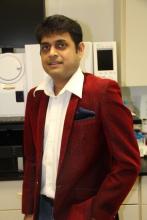
Mentor Bio
My doctoral work involved investigation of foreign gene expression in various plant tissues. In my postdoctoral work, I studied the incorporation and expression of the reporter gene (jelly fish green fluorescent protein or GFP) in herbicide tolerant weed species. Currently I am working in the field of biotechnology based biofuel development. My lab focuses on genetic transformation of plants and bacteria to produce biofuel like compounds. Ph.D. 2003, University of Rhode Island M.A. 1998, Montana State University B.S. 1996, B.C.K.V
Background and Purpose
The overall goal in the lab is production of genetically engineered plants for trait enhancement and modification. In particular, we are interested in producing biofuel/biodiesel-like compounds in plants and bacteria. We are also interested in differential gene expression plants in various abiotic stressful conditions. Our final goal is cloning abiotic stress induced genes and transforming plants with these genes to produce environmental stress resistant genetically engineered plants
Research Questions or Hypothesis
1) Overproduction of terpenes lead to production of biodiesel-like compounds in bacteria and plants; 2) Overexpression of abiotic stress induced genes will produce environmental stress tolerant plants.
Method
We use Agrobacterium tumefaciens, a soil borne bacteria to transform plants. We sequence the transcriptome of plants using the RNAseq technique and we analyze the transcriptome using bioinformatics software. Production of biofuel/biodiesel-like compounds will be analyzed by gas chromatograph-mass spectrometer. Global energy crisis (Problem) à Overproduction of terpenes lead to production of biodiesel-like compounds in bacteria and plants (Hypothesis) à Production of transgenic plants and bacteria (Experiment) à Analyze transgenic plants and bacteria for potentials for biofuel production (Data analysis) à Optimize best experimental approach to produce transgenic plants and bacteria for production of biofuel (Strategy development to address the problem)
Student Roles
Students will be involved in experiments as described. It is expected that students will present their data in scientific conferences and involved in writing manuscripts. All students will be expected to learn fundamentals of gene cloning and plant genetic engineering.
Expectations
Students are encouraged to enroll in BIOL 470 (Biotechnology) and Recombinant DNA (BIOL 572)
Conferences Typically Attended
America Society for Plant Biologists, Society for In Vitro Biology, International Plant and Animal Genome Conference
David Bermudes

The primary goals of my microbiome research is to understand the role of secreted bacterial protease inhibitors. It has long been understood that the human microbiome has numerous bacteria that secrete proteases, some of which play roles in inflammation, however, there has been little attention to protease inhibitors that may play a role in stasis and the maintenance of normal skin and gut ecologies. My lab is employing novel screening methods for isolation and analysis of bacteria producing secreted protease inhibitors to determine which bacteria produce them and what types of inhibitors they produce. Students in my lab learn basic isolation of bacterial strains, analysis of protease inhibitor production, PCR, 16sRNA sequencing, SDS-PAGE, reverse zymography and preparation of protein samples for protein sequence analysis (MALDI-TOF). Students will gain skills in and are responsible for performing PCR, DMA sequencing and analysis, protein and protease inhibitor analysis. Sophomores are expected to be able to plate bacterial samples from human skin to obtain single colony isolates and to screen them by performing protease inhibitor assays. Juniors are expected to be able to identify bacteria by performing PCR and sending the DNA out for sequencing and analyze the DNA sequence. They are also expected to perform basic microscopy and bacteria biochemical tests used in identification. Seniors are expected to conduct SDS-PAGE gels and reverse zymography, to prepare protein samples for protein sequencing (MALDI-TOF) and to analyze the protein sequence data. The primary goals of my cancer research are to use bacteria as therapeutic vectors for the treatment of tumors. Salmonella have many of the desirable properties of a cancer therapeutic delivery vector, including targeting of multiple tumors from a distant inoculation site, selective replication within tumors, tumor retardation, and the ability to express effector genes with antitumor properties directly within the tumor. My lab engineers genetic modifications to Salmonella and selects for suppressor mutations that are designed to enhance their antitumor properties and/or the ability to kill cancer cells. Students in my lab learn basic DNA manipulation, gene expression techniques and microbial genetics in order to generate strains with the potential for enhance anticancer properties. Students will gain skills in and are responsible for designing PCR primers, performing PCR, cloning DNA, transforming Salmonella and assessing genotypic and phenotypic changes. Sophomores are expected to be able to screen cloning reactions (ligations and transformations) by performing plasmid minipreps, conducting restriction endonuclease reactions, separation by gel electrophoresis and analysis of the resulting gel. Juniors are expected to be able to design and conduct cloning experiments and work with sophomores. Seniors are expected to be able to design PCR primers, carry out PCR reactions, clone and prepare DNA for DNA sequencing, be able to analyze the DNA sequence, and work with sophomores and/or juniors.
Maria Elena De Bellard
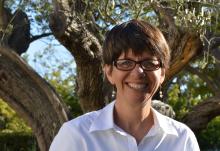
Mentor Bio
My passion for science started early, my father was one of the last explorers of Venezuela and our home was more a freeloading zoo than a regular house for 6 children. I went on to do my undergraduate school at a small, Caltech-like University in Caracas (Universidad Simon Bolivar) then worked for 4 years in a lab studying the Venezuelan Equine Encephalitis (which by the way you do not want to get infected with as I was due to a lab accident! But that is another story). I then decided to risk it all and got on plane and came to New York to start a Ph.D. program in biology. I was lucky that because my father’s friendships with the Herpetologists at the American Museum of Natural History, I was able to volunteer for one year there helping a renowned herpetologist, Janis Roze classify snakes from the tropics. After this fun experience I entered a Ph.D. in Molecular, Cellular & Developmental Biology at the City University of NY and worked under the leadership of an extraordinary Irish woman, Marie T. Filbin. Her mentorship solidified my interest in neural research and from there I moved to Caltech to do a Post-doctoral Fellowship with another extraordinary woman: Marianne Bronner. Finally I began as a Biology Faculty at the Biology department at CSUN on 2005.
Research Projects
“Look at neural crest markers through evolution in sharks, snakes and lampreys” & “Identify molecules that determine the specific migratory pathways decisions by neural crest cells.” Visit https://mariadebellard.wixsite.com/debellardlab for all projects.
Background and Purpose
My lab focuses on understanding the molecular and cellular mechanism underlying the earliest events in neural crest cell migration.
Research Questions or Hypothesis
1) Identify molecules that determine the specific migratory pathways decisions by neural crest cells.
The neural crest is a migratory population of cells but we know very little about the migratory clues that guide the neural crest for the rest of their path. It is the goal of this study to find which other molecules are capable of guiding the neural crest along their migratory routes. For this purpose I had set out to screen a group of neurotrophic factors that are expressed at the same time that the crest is migrating through the embryo and which have been shown to be important in neural crest migration by analyzing the corresponding knockout mice (5).
2) Look at neural crest markers through evolution in sharks, snakes and lampreys.
The neural crest appearance in evolution is critical for cranial formation and the development of the peripheral nervous system. The question my lab addresses is: How similar are the migratory routes of neural crest across evolution? We hypothesize that there are more similarities than differences.
Methods
My lab is interested in studying neural crest cell migration under many angles. With the help of highly driven undergraduates my lab has been able to develop new methods for studying neural crest cell migration in vitro and has set a reputation as a place to learn cell and neural crest biology/development among colleagues. We carry out classic cell biology experiments (cell migration, cancer analysis, molecular signals for migration), embryology studies (neural crest migration in live embryos, genetic manipulations) and the evo-devo of the neural crest across early vertebrates (snakes, turtles, geckos, sharks, rays). In chemoattraction project students live image and track cells migrating; then they gather parameters (i.e. velocity and direction) and compare with control or other chemicals. In the evo-devo project, students analyze their data is by comparing their observations (morphological location of their stem cells in embryos) with what is known for other, more common organisms.
Student Roles
Sophomore and junior students are part of the in-training cohort on their first year. Senior students are generally working on their individual project and helping more junior undergraduates.
Conferences Typically Attended
Society for Neuroscience, CSUPERB and Society for Developmental Biology.
Publications
Please visit https://mariadebellard.wixsite.com/debellardlab/publications for all of deBellard’s publications.
Robert Espinoza

Mentor Bio
Robert Espinoza grew up in San Diego, California and earned his BS in Biology at San Diego State University (1990) and Ph.D. in Ecology, Evolution, and Conservation Biology at the University of Nevada, Reno (2002). He spent a year as a post-doctoral fellow at the Carnegie Museum of Natural History and began his academic career at CSUN in the Department of Biology in 2001. He is currently a Professor of Biology and a Special Assistant to the Dean of the College of Science and Mathematics, and a Research Associate in the Department of Herpetology at the Natural History Museum of Los Angeles County.
Research Interests
Research in our lab is broadly concerned with understanding the physiological mechanisms that underlie animal diversity. In short, we seek to answer the “how” and “why” questions that pertain to animal function. Although most of our studies take place at the whole-organism level, recent investigations have drawn on inferences from biochemical properties of cell membranes, to tissue-level processes, to populations and communities. Our research is also integrative and comparative, which means we draw from multiple fields of inquiry (morphology, physiology, ecology, behavior, evolution) and include several species or population in each investigation. Although we occasionally study other animals, most of our research has focused on amphibians and reptiles. These two groups of vertebrates are very diverse (nearly 20,000 species combined), live in virtually every corner of the globe, and possess many adaptations and specializations that capture the fascination of scientists and the public alike. The evolutionary relationships are also well resolved for most groups of amphibians and reptiles, allowing us to test general hypotheses in an evolutionary framework.
Lab Name
Laboratory of Integrative and Comparative Herpetology (LICH)
On-going Projects
Current research themes in our lab include: (1) thermal adaptation, (2) diet evolution, (3) the mechanisms underlying colonization and invasion success by introduced species, and (4) the evolution of sociality. As ectotherms (“cold-blooded”), amphibians and reptiles are good models for studies of thermal adaptation because most aspects of their biology are closely linked to their abiotic environments. Reptiles are well suited to studies of diet evolution because closely related species often have different diets. This can help us identify the forces potentially selecting for diet evolution, while testing the mechanisms underlying those transitions in diet, and the consequences of those shifts on morphology, physiology, behavior, and interactions with other species. Invasive species are ideally suited for testing rapid evolution in behavior, physiology, morphology, and ecology, as successful invasives often become established in climates and habitats that are radically different from their native ranges.
Methods
We use a diverse array of methods and analytical tools to address the broad range of questions posed in our lab, often in collaboration with other labs at CSUN, across the US, and internationally. These include: genetics (currently: multilocus phylogenetic analyses, microsatellites, metagenomics, and genomics), physiology (metabolism, thermal tolerances, temperature-dependent performance, supercooling and freeze tolerance, evaporative water loss, digestive efficiency, passage rate, etc.), morphology (gross dissections, histology, electron microscopy), microbiology (genetically characterizing the microbiomes of host guts), and niche modeling and biogeography. Nearly every new study brings with it new analytical tools, and we embrace new projects that offer new opportunities for collaboration with other labs and add new tools to our toolbox. Past students have worked in a diversity of environments (deserts to tropics, cities to remote jungles) across the globe (numerous states in the continental USA, Argentina, Panamá, Malaysia).
Student Roles
Students from high school, to undergraduates, to graduates and postdoctoral scholars have worked in our lab. New undergraduates are mentored by me or a senior undergrad or grad student until responsibility and proficiency are established, then given the opportunity to develop their own project. The details of the research students do varies widely and depends on their interests and goals, depth of involvement, and nature of their investigation (lab, field, museum, modeling, etc.), but we will work together to define a project that is mutually agreeable and can be completed within the limits of resources and time available.
Expectations
Students must embrace the philosophy of learning by doing, taking risks, and accepting new challenges including novel research topics and methods. In fact, many of the projects in our lab break new ground in terms of our past experiences. For that reason, you must be willing to “own” your project in terms of responsibility for its development, progress, and completion. Ample support will be provided, which comes in the form of weekly lab meetings (held jointly with Dr. Robertson’s lab) where we will practice giving presentations (oral and poster), writing and reviewing manuscripts and grant proposals, and discussing research papers. Participation is mandatory, although the lead responsibility rotates each week. I also meet with students individually to identify research and career goals and create a plan to help them achieve those goals, along with our research objectives. Our lab is also very social and we engage in lots of outdoor activities each year (hiking, camping, collecting specimens, museum and zoo tours, etc.). Finally, our lab often hosts postdocs and visiting scientists from other parts of the world (3 months to a year), so be expected to interact with a diversity of scientists.
Conferences Typically Attended
Members of our lab usually attend the Joint Meetings of Ichthyologists and Herpetologists each summer. If I am not in the field, I attend the Society for Integrative and Comparative Biology meetings in January. We also attend several regional meetings as well (HerpFest, Southwestern Organismal Biologists).
Publications
Most of our lab publications can be viewed on our lab website or at ResearchGate.
Keywords
Amphibian, reptile, behavior, ecology, evolution, morphology, physiology, invasive species, thermal biology, diet, sociality.
Gilberto Flores - BUILD PODER Co-Program Director, Student Training Core

Mentor Bio
I am an interdisciplinary scientist who specializes in microbial ecology, exploring the diversity and function of microbial communities in a wide range of environments. I use a combination of cutting-edge molecular biology/bioinformatics tools (such as high-throughput sequencing and genomics) and more traditional microbiological techniques (e.g. cultivation, fluorescent microscopy) to address fundamental questions about the ecology and evolution of microorganisms. I have worked in a wide array of environments including deep-sea hydrothermal vents, terrestrial hot-springs, public restrooms and the human body. Ph.D. 2011, Portland State University M.S. 2006, University of Idaho B.S. 2001, Humboldt State University. https://gilbertoflores.weebly.com/
Research Projects
“Integrated Studies Into the Genomic, Metabolic, and Cultivable Diversity of the Human Gut SymbiontAkkermansia muciniphila” & Dietary Drivers of the Human Gut Microbiome.
Background and Purpose
The human gut is home to trillions of microorganisms that collectively are known as the gut microbiome. These microorganisms perform functions that are essential for normal human physiology but changes in the types of microorganisms in the gut have been associated with several diseases including obesity. Although numerous other factors play a role in the development of obesity, the composition of the gut microbiome is now considered an important environmental factor and a potential therapeutic target for treatment of obesity. Much of what we know about the association between the gut microbiome and obesity has been gleaned through observational studies of adult humans and from manipulative experiments using model organisms like mice. Given that childhood obesity has more than doubled over the past 30 years particularly in ethnic minorities in the USA, identifying if an association also exists in children would strengthen our understanding of the pathophysiology of obesity.
Research Questions or Hypothesis
Research in my lab seeks to identify the factors that influence the composition of the gut microbiome in both healthy and overweight/obese children. Factors of interest include both long-term and short-term dietary habits, and antibiotic use.
Method
To address these questions, we utilize cutting-edge genomic techniques coupled with more traditional microbiological methods to characterize the microorganisms at the community and species levels.
Student Roles
Students working in my lab will gain valuable hands-on experience in both wet-lab (e.g. DNA extraction, PCR, DNA sequencing, bacterial cultivation, etc.) and bioinformatics based methods.
Expectations
Students working in my lab are expected to develop independent projects with my guidance but can also expect to work collaboratively with other graduate and undergraduate students. I also expect students to immerse themselves in the primary literature outside of their designated laboratory times so long as it does not interfere with their coursework.
Conferences Typically Attended
Conferences typically attended by students and myself include the American Society of Microbiology General Meeting (every May/June), the International Society of Microbial Ecology Meeting (even years in August), and the ASM Conference on Beneficial Microbes (even years, September).
Publications
To see a full list of Dr. Flores’ publications, writings and press coverage, please visit: https://gilbertoflores.weebly.com/publications.html
Yoshie Hanzawa

Mentor Bio
A primary goal of my research is to understand the genetic bases of reproductive transition of plants (flowering) in response to environmental signals, and to clarify how these mechanisms have evolved. My research currently focuses on the evolution of the flowering gene network in Arabidopsis and soybean, taking an interdisciplinary approach encompassing molecular genetics, genomics, biochemistry, population genetics and systems biology, with an ultimate goal of plant improvement for higher adaptation to diverse and changing environments.
Background and Purpose
Phosphatidylethanolamine-binding proteins (PEBP), also known as Raf-kinase inhibitor proteins, play critical roles in the regulation of diverse signaling pathways controlling cell growth and differentiation in bacteria, plants and animals and affect a range of diseases including cancer metastasis, pancreatitis as well as Alzheimer’s disease, which makes PEBP a particularly suitable target for precision medicine and individualized therapy. In plants, FT and TFL1 in the PEBP family govern a unique and simple molecular switch that modulates the activity of the transcription factor FD and determines the fate of meristematic cells in reproductive transition (flowering), offering the novel molecular mechanisms to engineer PEBP signaling cascades for disease-specific therapeutic intervention.
Research Questions or Hypothesis
Both FT and TFL1 bind FD and modulate expression of the floral meristem identity genes that control development of the reproductive organs. However, FT and TFL1 act in an opposite manner; the FT-FD complex induces this process, while TFL1-FD represses. Our preliminary work identified that FD phosphorylation at Threonine 282 in the C-terminus is responsible for the transcription activator action of FD, and that multiple Calcium-Dependent Protein Kinases (CPKs) phosphorylate FD at T282. We hypothesize that FD phosphorylation may be regulated by FT and TFL1. Alternatively, FT and TFL1 may control subsequent cellular actions of FD depending on FD’s phosphorylation status.
Method
Epitope-tagged FD and mutant FD (T282A and T282S) will be coexpressed in protoplast cells of Arabidopsis with FT, TFL1 or control and the biochemical and cellular actions of FD and mutant FD will be examined, including phosphorylation by CPKs, interaction with FT and TFL1, organelle localization, stability and transcription activity. The function of FD, mutant FD and CPKs in flowering transition will be tested by creating transgenic Arabidopsis plants overexpressing these proteins or carrying mutations using the latest CRISPR/Cas9 systems available for plants. Data analysis: Protein abundance, phosphorylation and immunoprecipitation will be observed using Western Blotting and quantification by biotin or 32P labeling, and localization and interaction using fluorescent or confocal microscope. Transcription of downstream genes will be examined using quantitative RT-PCR. Flowering phenotypes will be assessed by the numbers of days and leaves produced before flowering and statistical analyses will be conducted using Excel or SAS.
Student Roles
All levels of students will participate in cloning, Western, plant transformation and screening, expression studies and phenotypic analyses. In addition, junior and senior students will contribute to experimental design and interpretation of results, and senior students to training of sophomore and junior students and presentation of results at conferences and in peer-reviewed journals.
Expectations
Students in this project will learn in-depth knowledge in signaling mechanisms controlling diverse diseases and techniques in emerging molecular genetic, biochemical and genome editing approaches that are extensively applied to biomedical research including precision medicine solutions.
Conferences Typically Attended
American Society for Plant Biologists, International Conference on Arabidopsis Research, Society for Molecular Biology and Evolution, Genetic Society of America
Publications
Wu, F. and Hanzawa, Y. (2017) A Simple Method for Isolation of Soybean Protoplasts and Application to Transient Gene Expression Analyses. Journal of Visualized Experiments. In Press.
Wu, F., Sedivy, E.J., Price, W.B., Haider, W. and Hanzawa, Y. (2017) Evolutionary trajectories of duplicated FT homologs and their roles in soybean domestication. The Plant Journal. 90(5):941-953.
Sedivy, E.J., Wu, F. and Hanzawa, Y. (2017) Soybean domestication: the origin, genetic architecture and molecular bases. New Phytologist. doi: 10.1111/nph.14418
Serrano-Mislata, A., Fernández-Nohales, P., Doménech, M.J., Hanzawa, Y., Bradley, D. and Madueño, F. (2016) Separate elements of the TERMINAL FLOWER 1 cis-regulatory region integrate pathways to control flowering time and shoot meristem identity. Development. 143(18):3315-3327.
Baumann K., Venail, J., Berbel, A., Domenech, A.J., Money, T., Conti, L., Hanzawa, Y., Madueno, F. and Bradley, D. (2015) Changing the spatial pattern of TFL1 expression reveals its key role in the shoot meristem in controlling Arabidopsis flowering architecture. Journal of Experimental Botany. 66(15):4769-4780.
Wu, F. and Hanzawa, Y. (2014). Photoperiodic control of flowering in plants. Handbook of Plant and Crop Physiology. the 3rd edition, ch.4, CRC Press, Taylor & Francis Group, LLC.
Wu, F., Price, W.B., Haider, W., Seufferheld, G., Nelson, R. and Hanzawa, Y. (2014). Functional and Evolutionary characterization of the CONSTANS gene family in short-day photoperiodic flowering in soybean. PLOS ONE. 9: e85754.
Rosas, U., Mei, Y., Xie, Q., Banta, J., Seufferheld, G., Gerald-Martinez, S., Chou, L., Bhambra, N., Parks, J.D., Flowers, J., McClung, C.R., Hanzawa, Y. and Purugganan, M.D. (2014). Variation in Arabidopsis flowering time associated with cis-regulatory variation in CONSTANS. Nature Communication. 5:3651-3658.
Ray Hong
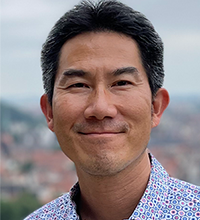
Mentor Bio
Joined CSUN Biology Department 2008. He is a post-doc fellow at the Max-Planck Institute for Developmental Biology (Tuebingen, Germany). Ph.D. Biology UC San Diego 2002 B.A. Biology Pomona College 1996.
Research Projects
Our research primarily involves the use of the nematode model Pristionchus pacificus, which has been used to study the evolution and developmental programs required for host finding behavior at the molecular and genetic level. https://rayhonglab.wordpress.com/research
Background and Purpose
To understand the chemosensory genes involved in the interaction between invertebrates.
Research Questions or Hypothesis
The beetle-associated nematode (a round worm) Pristionchus pacificus represents a model system to study nematodes that associate with insects. In particular, our research sought to identify host factor that affect nematode behavior and development, with the long-term goal of translating basic research knowledge into improving treatments against parasitic nematodes.
Method
Molecular biology and genetics involving PCR, recombinant DNA technology, genetically modified organisms, bioinformatics. Data analysis is reductive and quantitative. We try to isolate factors to characterize genetic function. Data collection and processing is quantitatively intensive.
Student Roles
Sophomores: genetic screens, DNA extraction, PCR. Juniors: genetic crosses, advanced PCR, recombinant DNA “cloning” Seniors: independent project involving the above techniques
Expectations
Sophomores: strong performance in BIOL106; will be paired with a more senior student (undergraduate or masters) on specific projects. Juniors: strong performance in BIOL107; BIOL360 Genetics; ready to be part of a team. Seniors: strong performance in BIOL380 Cell Biology and other advanced courses in biology. Ready to work on an independent project.
Conferences Typically Attended
CSUPERB conference (CSU Program for Education and Research in Biotechnology)(January), CSUNposium (April), CSUN Sigma-Xi Research Symposium (April), International C. elegans Conference (June), Society for Developmental Biology (July)
Publications
For a full list of publications, visit: https://rayhonglab.wordpress.com/publications/
Mariano Loza Coll
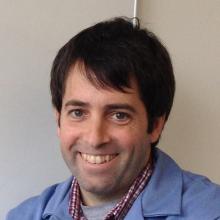
Mentor Bio
I went to university in Buenos Aires, Argentina, where I majored in Biology and specialized in animal physiology. For my PhD, I moved to Canada, and received my degree from the Department of Medical Biophysics at the University of Toronto, where I studied cancer cell biology. Then I came to the United States (first to San Diego, and then Los Angeles), where I trained as a postdoc investigating the genetics basis of asymmetric cell decisions using the fruit fly Drosophila melanogaster as an experimental model system. In the Fall 2015 I joined the Department of Biology at CSUN, where my students and I are currently investigating the genetic control of stem cells in flies. You may visit our lab's website at: https://lozacollcsunbio.wordpress.com
Title of Research Project
Genetic regulation of adult stem cells in Drosophila melanogaster
Background and Purpose
In order to remain functional, many of our organs can replace cells that are lost to injury or wear, thanks to the activity of adult stem cells. Like their embryonic counterparts, adult stem cells undergo “asymmetric self-renewing divisions”, generating a new copy of themselves (to maintain a healthy stem cell pool) and a cell that differentiates into a specific cell type that replaces missing cells in the organ. A long-term objective of my laboratory is to characterize the genetic regulatory mechanisms and networks that control adult stem cells across tissues.
Research Questions or Hypothesis
One of the general hypotheses that we are actively investigating at this time is that systemic stress can affect the genetic regulation of stem cells, impairing the capacity of their host tissues to maintain homeostasis and/or properly recover from injury.
Method
We normally combine classical Drosophila genetics, tissue dissections and high resolution microscopy to determine how stressful stimuli may affect major genetic pathways controlling the number, activity and responsiveness of diverse adult stem cell populations in flies. We also try to identify new genetic modules and pathways through the bioinformatics, integrating public datasets from genome-wide screens related to stem cells. In a typical experiment, we would subject flies that carry cell-type specific markers and genetic activity reporters to any of a number of forms of systemic stressors (e.g. heat shocks, intoxication, reproductive isolation). After several days, we dissect relevant organs/tissues out of the fly, and analyze the expression of the cell type and activity markers through microscopy, which allows us to not only quantify adult stem cells in a tissue, but also the identity and function of their progeny.
Student Roles
None of the techniques used in our lab (setting up and caring for Drosophila crosses, dissecting tissues and preparing samples for microscopy) demand any special skills or prior training, nor do they involve hazardous reagents or equipment. Therefore, students at all levels (sophomore, junior and senior) can and will be involved in each and all steps of our experiments. While I encourage teamwork within our group, I also expect that my students can work independently and develop a sense of ownership and pride in their projects.
Expectations
I expect my students to take the project and themselves very seriously, because I also take them both very seriously. For us to maintain a productive and meaningful mentorship relationship, I mostly need to see that our lab is a top priority for the student. From me, students can expect respect, patience, dedication and a profound passion for doing science. In my lab, students will learn how to set up genetic crosses, predict their outcomes, dissect tissues and carry out fairly sophisticated fluorescence microscopy. But much more importantly, they will learn to think independently as scientists, evaluate evidence critically, and formulate testable hypotheses. In addition, I strongly advocate the communication of scientific progress, challenges and approaches to society at large. I have spearheaded several science communication and outreach projects, including the development of a website for the dissemination of science news to a broad readership (www.science4everybody.com). Regardless of their future career choices, science majors will be our science ambassadors, interpreters and advocates in society. Therefore, besides providing my students with the best experimental genetics training that I can offer, I will passionately mentor them to develop sound communication skills.
Conferences Typically Attended
CSUNposium, CSUPERB, GSA Drosophila Research Conference. We may also sporadically attend the Society for Developmental Biology Meeting, and the American Society for Cell Biology Conference.
Publications
Loza-Coll MA, Petrossian CC, Boyle ML, Jones DL. Heterochromatin Protein 1 (HP1) inhibits stem cell proliferation induced by ectopic activation of the Jak/STAT pathway in the Drosophila testis. Exp Cell Res. 2019 Feb 25. pii: S0014-4827(19)30087-4. doi: 10.1016/j.yexcr.2019.02.024.
Loza-Coll MA, Jones DL. Simultaneous control of stemness and differentiation by the transcription factor Escargot in adult stem cells: How can we tease them apart? Fly (Austin). 2016 Apr 2;10(2):53-9.
Loza-Coll MA, Southall TD, Sandall SL, Brand AH, Jones DL. Regulation of Drosophila intestinal stem cell maintenance and differentiation by the transcription factor Escargot. EMBO J. 2014 Dec 17;33(24):2983-96.
Voog J, Sandall SL, Hime GR, Resende LP, Loza-Coll M, Aslanian A, Yates JR 3rd, Hunter T, Fuller MT, Jones DL. Escargot restricts niche cell to stem cell conversion in the Drosophila testis. Cell Rep. 2014 May 8;7(3):722-34.
Solek CM, Oliveri P, Loza-Coll M, Schrankel CS, Ho EC, Wang G, Rast JP. An ancient role for Gata-1/2/3 and Scl transcription factor homologs in the development of immunocytes. Dev Biol. 2013 Oct 1;382(1):280-92.
Rast JP, Smith LC, Loza-Coll M, Hibino T, Litman GW. Genomic insights into the immune system of the sea urchin. Science. 2006 Nov 10;314(5801):952-6. Review.
Jonathan Kebler

NOT ACCEPTING NEW MENTEES*
Mentor Bio
I teach undergraduate and graduate courses on cell/molecular biology and cancer. My research focuses on understanding the mechanisms by which cancers begin and then later acquire the ability to metastasize. We also study these same mechanisms during tissue regeneration to better understand their normal contexts. By understanding what drives cancer and what prevents complete tissue regeneration, we aim to develop novels therapeutic strategies. Ph.D. 2009, University of California San Diego M.S. 2003, California State Polytechnic University Pomona B.S. 1999, California State Polytechnic University Pomona. Visit my lab website.
Background & Purpose
Broadly, we seek to characterize the molecular mechanisms and functions of genes that play critical roles in cancer and tissue regeneration. Our work integrates molecular/cellular biology, signaling biochemistry, animal models of normal development and disease, and microscopy imaging to answer questions in these fields. Ongoing Projects: 1) Switching of TGFbeta signaling outcomes in normal and disease states; 2) Innate and acquired therapy resistance in breast cancer; 3) Tissue regeneration and wound healing; 4) Biomarker identification in pancreatic cancer; 5) Influence of the microenvironment on homeostasis and cancer progression.
Research Question(s) or Hypothesis
How do changes in gene expression and subcellular protein localization coordinately regulate stem cell behavior during tissue regeneration? How do intracellular scaffolding proteins mediate TGFbeta-mitogenic signaling crosstalk and tumor progression in response to extracellular cues? Questions such as these are at the center of our lab’s research efforts. In many cases, genes that are known to perform critical roles during development also have integral functions during cancer initiation and progression. In this regard, cancer may be considered a recapitulation of developmental (or regenerative) processes in an inappropriate temporal and spatial manner. Gene families such as TGF-beta and EGF along with their receptors, co-receptors and intracellular mediators are central regulators of essential stages during vertebrate development. Notably, however, many of these genes are deregulated in multiple tissue types to induce oncogenesis and are classified as developmental oncogenes. Fluctuations in the genetic and/or epigenetic states of developmental oncogenes are most abundant during embryogenesis in utero and regenerative/healing or cancer initiation/progression processes in the adult. Cripto (TDGF1, tumor-derived growth factor one) and PEAK1 (SGK269) are two developmental oncogenes that our research group is studying with regard to how they control cell proliferation/migration of tumor cells and govern critical steps during stem cell recruitment/differentiation in tissue development/regeneration. We are also interested in identifying new genetic/molecular regulators of tumor phenotypes in breast and pancreatic cancers, and further identifying any novel developmental functions that these genes may have.
Method
Immunostaining, qPCR/RT-PCR, Site-Directed Mutagenesis, Cell Biology, Intravital Cancer Imaging, RNAi Techniques, Viral Gene Delivery, Confocal/TIRF/Epi Microscopy, Chick-CAM and Orthotopic Xenograft Tumor Models, Cell Proliferation/Migration/Cycle/Transformation Assays, Radio-Immunoassays of Ligand-Receptor Interactions, Luciferase-Response Assays, Phosphoprotein Analysis, Kinase Assays, iPSC/ESC Culturing and Characterization, Adipocyte/Neuronal Cell Differentiation, Bioinfomatics, TGF-beta Superfamily Signaling, Analysis of Stem Cell Properties in Cancer Cells, Primary Cell Isolation and Characterization from Normal and Tumor Tissue, Zebrafish Husbandry and Developmental Studies, and FACS.
Student Roles
Trainees in our group will gain experience with the techniques listed above.
Expectations
All undergraduates are paired with graduate students in the lab from whom they learn techniques/skills relating to a particular project. Undergraduates are assigned a portion of the larger project as their “own” project, but continue to work closely with Dr. Kelber and the graduate student to ensure that the project progresses and that their work is relevant to the larger research efforts. Ultimately, this model ensures that undergraduates have the opportunity to publish their research as all graduate students must publish their findings.
Conferences Typically Attended
All lab members are encouraged to attend international scientific conferences on cancer, stem cells and developmental biology (e.g., ASCB, AACR, SDB, and ISSCR)."
Publications
For more visit http://developmentaloncogenelab.gutensite.net/
2015 Agajanian M*, A Campeau*, M Hoover*, A Hou*, D Brambilla*, SL Kim*, Richard Klemke and Jonathan Kelber. PEAK1 acts as a molecular switch to regulate context-dependent TGFbeta responses in breast cancer. PLoS ONE https://doi.org/10.1371/journal.pone.0135748
2015 M Agajanian*, F Runa*, J Kelber. Identification of a PEAK1/ZEB1 signaling axis during TGFβ/fibronectin-induced EMT in breast cancer. BBRC
2014. Fujimura K, T Wright, J Strnadel, S Kaushal, C Metildi, AM Lowy, M Bouvet, J Kelber, RL Klemke. A hypusine-eIF5A-PEAK1 switch regulates the pathogenesis of pancreatic cancer. Cancer Research
Rachel Mackelprang

Mentor Bio
— Ph.D. 2006, University of Washington B.S. 2001, University of Utah. Keywords: Permafrost, climate change, genomics, genetics, metagenomics, bioinformatics, microbiology.
Background and Purpose
Our lab is broadly interested in understanding microbial populations by integrating next-generation tools such as high-throughput DNA sequencing with traditional microbiology approaches. Our overarching goals are two-fold. Microbial life exists in many extreme environments including permafrost, soil in the arctic that has been frozen for thousands of years. Understanding how permafrost microorganisms survive and grow can give us insights into exobiology, global warming, and antibiotic resistance.
Research Questions or Hypothesis
(1) Exobiology— A fundamental goal of exobiology is to investigate the boundaries at which life can exist to inform the search for habitable environments and life outside Earth. Since six of the eight other planets in our solar system, as well as their moons, asteroids, and comets are permanently frozen, life—if it exists—on these other celestial bodies is most likely to be found in a sub-zero environment. On Earth, permafrost acts as analogue to Mars and other cryogenic bodies. If we can understand how microbial life survives in permafrost on Earth, it will help us understand how life may survive on other planets in our solar system and beyond. (2) Climate change— One quarter of the earth’s terrestrial surface is underlain by permafrost, or perennially frozen soils. Permafrost soils contain approximately 25% to 50% of the total global soil carbon pool. Permafrost carbon is protected from microbial degradation by freezing temperatures. However, rising global temperatures are causing the permafrost to thaw. As the permafrost thaws, it is predicted that microorganisms will become more active and that organic matter will become increasingly accessible for microbial degradation, releasing large amounts of greenhouse gasses into the atmosphere. We study how permafrost microbes degrade carbon in order to predict its contribution to climate change. (3) Antibiotic resistance—Antibiotics were discovered more than 70 years ago and revolutionized medicine. Growing antibiotic resistance due to misuse is threatening the effectiveness of these medications. We study the history of antibiotic resistance by studying antibiotic resistance genes in microbial communities that have not been exposed to antibiotics—those that have been trapped in permafrost for thousands of years.
Method
Our lab uses a large number of techniques including standard laboratory procedures (ex: DNA extraction & manipulation, PCR, culturing of bacteria) and computational analysis of large-scale genomic data sets. Students may select lab or computer based studies.
Conferences Typically Attended
Members of the lab have attended the following conferences: American Society of Microbiology, International Society for Microbial Ecology, and the International Conference on Permafrost.
Publications
For a full list of publications, visit: http://www.csun.edu/~rmackelpr/LabWebsite/Publications.html
Cindy Malone
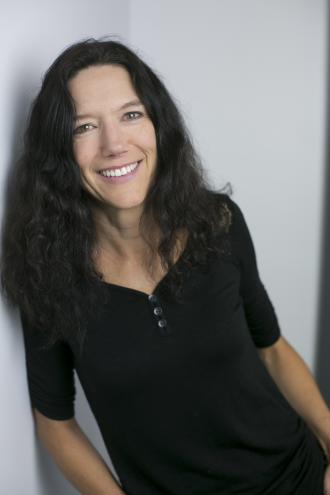
Mentor Bio
Dr. Malone earned her B.S in Biology at Illinois State University and her PhD in Microbiology and Immunology at UCLA. She continued her Post-doctoral work at UCLA in Molecular Genetics. Dr. Malone is the Director of the $6.1M CSUN-UCLA Bridges to Stem Cell Research Program funded by the California Institute for Regenerative Medicine. Dr. Malone’s own research in her CSUN lab is aimed at understanding how genes are regulated through genetic mechanisms that alter gene expression. https://www.csun.edu/science-mathematics/biology/cindy-malone
Elite Gene Team App: https://itunes.apple.com/us/app/elite-gene-team/id1046974841
E-Portfolio: https://contentbuilder.merlot.org/toolkit/html/snapshot.php?id=65226554931352
Youtube Channel: https://www.youtube.com/channel/UC3K2TdToNgAJcTK_V94d7qw
Background and Purpose
Appropriately controlling when and where genes are turned on and off is essential for cells to function normally and avoid becoming cancerous or dying prematurely. The expression of a gene is usually controlled by adjacent DNA sequences, called the gene promoter that functions essentially as an “on/off switch”. In a previous study, we linked a set of genes to both an aggressive cancer and non-aggressive/indolent cancer by an analysis of genes expressed (turned on) in an aggressive mantle cell lymphoma (MCL) compared the genes to the expressed non-aggressive small lymphocytic lymphoma (SLL). We study the promoter regions of these genes to determine why and how they are expressed or not in our lymphoma tumor samples. Our study will provide new insight for how these lymphoma associated genes are controlled and may increase the knowledge of how gene expression is controlled in general. Enhanced understanding from our studies should provide information for why certain cancers are very aggressive and others are less aggressive and therefore have a higher long-term survival rate.
Research Questions or Hypothesis
We hypothesize that these identified lymphoma-associated genes are dysregulated in these cancers and therefore play a role in their aggressive or non-aggressive natures, respectively.
Methods
Promoter analysis of these genes, first in an epithelial cell line and subsequently in MCL and SLL cell lines, will identify how these genes are regulated and will lead to in vivo promoter regulation studies. We use bioinformatics (computer analysis) first, to identify the promoter regions of the lymphoma associated genes we found, then we isolate the promoter DNA region and determine how they are turned on and off. Molecular genetics techniques such as PCR, subcloning, restriction digest analysis, gel electrophoresis, cycle sequencing, site-directed mutagenesis, transient transfection, and dual luciferase analysis are used.
Student Roles
Students of all levels can run their own project from start to finish. Students choose a gene from the list of lymphoma-associated genes, identify and design PCR primers to the promoter region, PCR and subclone. After they verify their promoter by sequencing, they will perform transient transfections dual luciferase analysis. Site-directed mutagenesis and subsequent transient transfections and analysis will be performed to identify how the promoter is turned on and off.
Expectations
Students present their work at conferences and are integral in the manuscript and publication submission process. Students performing research in my laboratory often go on to CSUN UCLA Bridges to Stem Cell Research Program, PhD programs, industry jobs, and professional schools.
Conferences Typically Attended
CSUPERB, CSUN symposia, Sigma Xi Symposia, UCLA Stem Cell symposia, CIRM Bridges Trainee meeting, Gordon conferences, ISSCR.
Publications
For a full list of publications, please visit: https://www.csun.edu/science-mathematics/biology/cindy-malone
Rheem Medh
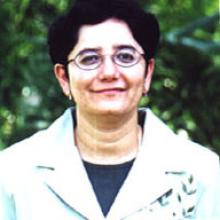
NOT ACCEPTING NEW MENTEES*
Mentor Bio
Ph.D. 1990, University of Texas M.S. 1984, University of Bombay B.S. 1982, University of Bombay
Background and Purpose
My primary interest is in understanding how cells die. There are multiple forms of cell death; the one I am most interested in is called ‘apoptosis’ or ‘programmed cell death’. It is a form of cellular suicide, where the dying cell activates within itself a series of well-orchestrated events including activation and repression of precise sets of genes, which modulate the execution. Excessive apoptosis, or a defect in the process has been implicated in diseases such as neurodegenerative disorders like Alzheimer’s, autoimmune disorders, and cancer. My long-term goal is to understand the biochemical and molecular basis of apoptosis and to utilize this information to design therapeutic strategies to alleviate or overcome human diseases, particularly cancer.
Research Questions or Hypothesis
Using both conventional methods and microarray technology, we have identified a set of genes that may modulate leukemic cell apoptosis. We are testing the hypothesis that these genes play a crucial role in early steps of chemotherapy-induced apoptosis of leukemic cells. The molecular pathway for apoptosis involving each of these genes is being systematically studied, along with potential cross-talk among them.
Methods
We are studying the molecular events associated with apoptosis of leukemic cells in response to therapeutic agents such as glucocorticoid hormones, immunosuppressants and anti-proliferative agents, in parallel models of glucocorticoid-sensitive and -resistant human lymphoblastic cells. This work involves the use of modern cell and molecular biology techniques such as mammalian cell culture, morphological and biochemical characterization of cells; DNA and RNA isolation and characterization by restriction digestion, Southern and Northern blotting and polymerase chain reaction; protein expression and analysis by Western Blotting; protein-protein interaction and DNA-protein interaction studies etc. Various anti-cancer drugs are being tested in cell culture models of cancer for their ability to alter gene expression, and induce apoptosis. Key gene regulatory events that trigger apoptosis are being identified. Students will perform experiments to generate data on drug-induced cell death, apoptosis and gene regulation. Data will be analyzed through standardized methods.
Student Roles
There are a number of potential projects for undergraduate and graduate students interested in this field of research. Student projects vary depending on the qualifications, background and goals of the student. Students obtain training in research methodology, scientific thinking, critical analyses as well as learn diverse techniques including cell culture, SDS-PAGE and Western blotting, DNA/RNA extraction and purification, Restriction enzyme digestions, PCR, DNA cloning, Northern hybridization, reverse transcription, get mobility shift assays, reporter gene assays, cell proliferation assays, apoptosis assays and flow cytometry.
Expectations
Under my mentorship, students are expected to perform experiments, interpret data, and discuss their research outcomes among peers in laboratory meetings, write reports summarizing their data, and present their research findings at local, regional, and national conferences.
Conferences Typically Attended
Early stages: department/college/campus-wide research symposia. Intermediate: CSU-wide biotechnology symposium, CSUPERB. Advanced: Annual meetings of the Endocrine Society and The American Association for Cancer Research.
Publications
For a full list of publications, please visit: http://www.csun.edu/~rm77305/
Sean Murray
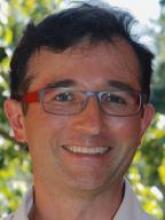
NOT ACCEPTING NEW MENTEES*
Mentor Bio
B.S., 1997Biology and Psychology, Summa Cum Laude, Montclair State University, NJ M.S., 1999 Biology,Yale University, New Haven, CT, M.Phil., 2000 Biology, Yale University, New Haven, CT Ph.D. 2003 Yale University 2003-2007 Postdoctoral Fellow in Dr. Lucy Shapiro’s laboratory at Developmental Biology Department, Stanford University, Stanford, CA 2004 J. Spangler Nicholas Prize for best Ph.D. thesis in Molecular, Cellular and Developmental Biology at Yale University.
Research Interests
The dimorphic bacterium Caulobacter crescentus is a model organism for studying the bacterial cell cycle. Its asymmetric cell division results in one swarmer and one stalked cell progeny. Motile swarmer cells can not undergo DNA replication until they differentiate into stationary stalked cells. If sufficient nutrients are available, swarmer cells eject their polar flagellum and build a stalk (with adhesive at its end; for attaching to a surface near nutrients) at the same pole formerly occupied by the flagellum. Stalked cells are competent for DNA replication and cell division. During cell division, a flagellum is placed at the pole opposite that of the stalk. Caulobacter's obligate cell cycle is controlled by oscillating master regulators that control different genetic modules in space and time. As a result of this carefully orchestrated process, a flagellum is synthesized only when needed (just prior to cell division) and is placed at the pole opposite that of the stalk. Likewise, a new stalk is synthesized only at the pole previously occupied by a flagellum. Our lab studies the roles of lipid biosynthesis in this process, using pharmacological, genetic, and molecular approaches. Only by further elucidating the control mechanisms of bacterial cell division can we advance the development of new antimicrobial compounds. Lipid biosynthesis is essential for cell viability and bacterial fatty acid synthetic enzymes have been suggested as antibiotic targets. In fact, compounds specific to bacterial fatty acid biosynthetic compounds have been generated. Most previous studies on bacterial lipid metabolism have focused on E. coli, a gamma-proteobacteria. Caulobacter in contrast, as an alpha-proteobacteria, is closely related to human pathogenic bacteria, such as Brucella and Rickettsia.
Background and Purpose
The purpose of my research is to study how cells enter and exit the bacterial cell cycle in response to stresses such as starvation or antibiotic treatment.
Research Questions or Hypothesis
My research questions include:
1) What genes are differentially regulated during starvation? Methods: RNA will be extracted from starved bacterial cells. cDNA libraries will be created and deep-sequencing will identify changes in transcript abundance in bacterial cultures grown under various conditions. CSUN students will analyze the data using bioinformatic computational tools. Murray Lab members will confirm the changes in gene expression using real-time qPCR or transcriptional reporters.
2) Which of the starvation-upregulated genes contribute to persistence during starvation? Methods: A subset of differentially regulated genes identified through deep-sequencing will be selected for gene knock-outs. The gene knockout strains will be tested for survival during starvation. Gene knock-outs will be confirmed using molecular genetic techniques. The strains will be tested for survival during starvation using direct counts, colony formation, and live/dead stains.
3) Do the starvation-upregulated genes contribute to persistence during antibiotic treatment? Methods: A subset of differentially regulated genes identified through deep-sequencing will be selected for gene knock-outs. The gene knockout strains will be tested for survival during starvation. Gene knock-outs will be confirmed using molecular genetic techniques. The strains will be tested for survival during antibiotic treatment using direct counts, colony formation, and live/dead stains.
Student Roles
Sophomores will make bacterial growth media and solutions, culture bacteria using the aseptic techqnique, and clone PCR products into vectors to create transcriptional reporters. Juniors will confirm gene transcription using transcriptional reporters and create geneknockouts. Seniors will use real-time qPCR to validate differentially-regulated genes during starvation and will test gene knock-out strains for persistence in starved- or antibiotictreated cells.
Expectations
The Murray laboratory offers excellent training for students who are interested in becoming clinical laboratory scientists or public health microbiologists
Conferences Typically Attended
Murray lab members have recently attended the CSUPERB Annual Meeting, the CSUN research symposium, an EMBO meeting on alpha-proteobacteria in Germany, and plan to attend the American Society for Microbiology Conference on Prokaryotic Development in Washington DC in June 2015.
Publications
For a full list of publications, please visit: https://www.csun.edu/science-mathematics/biology/sean-murray
Jeanne Robertson
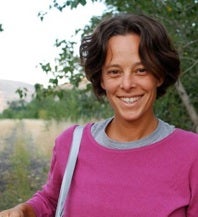
NOT ACCEPTING NEW MENTEES*
Mentor Bio
My research is focused on the microevolutionary processes that mediate population and lineage diversification, mostly in amphibians and reptiles. Specific areas of interests include: natural selection, behavior and sexual selection, spatial patterns of diversity, the evolution and functional significance of color pattern, population genomics and phylogeography, the California Channel Islands, speciation, and biogeography of Central America. I teach the Introductory Biology course (106) for Biology majors - this course is part of the MyCSUN tablet initiative - we use the iPad in class to engage with course material during lecture - thus creating a student-centered learning environment! I also teach Molecular Markers in Evolutionary Studies (BIOL452) – a course which introduces students to the lab techniques and concepts used in Molecular Ecology. Ph.D. 2008, Cornell University M.S. 2001, Southern Illinois University Carbondale B.S. 1993, University of California Davis. Visit my lab website for more information.
Research Project Title
Genomic and behavioral basis of speciation in field crickets
Background and Purpose
Research in the Robertson Lab focuses on the evolutionary processes that mediate lineage diversification speciation, including the relative roles of gene flow and selection A Build PODER student will examine the evolution of reproductive isolation in two divergent lineages of crickets that co-occur in narrow contact zone, and will determine the extent of hybridization in these two lineages using an integrated field and molecular genetic research approach. The two cricket species are nearly indistinguishable except for color and habitat preference. While G. saxatilis is uniformly black in coloration and prefers rocky outcrops, G. navajo exhibits color polymorphism, ranging from black to red, and occurs on red, sandy substrate.
Research Questions or Hypothesis
Aim 1: We predict that the black color form of G. navajo morphs represent a hybrid cross with G. saxatilis in the contact zone. Aim 2. We expect that natural selection acts on color morph in the contact zone of Goblin Valley, Arizona.
Method
Mixed method. Molecular Ecology & Ecological Field-based research. Aim 1: A high-throughput sequencing approach (RADseq) will be used to genotype individuals of both G. navajo and G. saxatilis, with a focus on contact zone populations. RADseq data will be filtered through abioinformatics pipeline. We will conduct a suite of analyses including genetic diversity estimates, genetic clustering analyses (e.g., STRUCTURE, PCA) to determine genetic groupings. The program NewHybrids will be used to examine the extent of hybridization; this metric will allow us to estimate the extent of hybridization in the wild and distinguish among multiple hybrid generations. Aim 2: Students will perform field-based measure of natural selection in the contact zone. Enclosures will test for survival of crickets that are both cryptic and conspicuous. We will uncover a signal of strong selection if survival is higher in cryptic color forms.
Student Roles
This research includes both field and molecular laboratory research. At all levels, students will conduct fieldwork in the summers of 2018-2019 in Utah, Arizona and California (natural selection studies, field sampling). Advanced students (Juniors/Seniors) will have the opportunity to work alongside a graduate student and PI to perform bioinformatics. Students will be mentored in all aspects of manuscript preparation and submission.
Expectations
The student can expect to gain experience in both field, experimental laboratory, and molecular genetics. In the lab, the student will learn: DNA extraction, DNA quantification and all aspects of library construction for next-generation sequencing. Both the heritability and molecular components of this research will help students develop skills that can be broadly applicable to all biotechnology and medicine fields.
Conferences Typically Attended
A build PODER student will present findings at the CSUN student research symposium, held annually and will be expected to attend one of the scientific conferences: Society for Integrative and Comparative Biology (SICB); Evolution; and/or the Ecological Society of America (ESA).
Publications
For a list of publications, please visit my lab website.
Cristian Ruiz Rueda

Methods
I am a molecular microbiologist working on antibiotic resistance. Before coming to CSUN, I was Adjunct Assistant Professor (2015–). Dept. Microbiol. & Immunol., Weill Cornell Medical College, New York, NY; Research Associate (2013–2015) with Dr. Francis Barany, Dept. Microbiol. & Immunol., Weill Cornell Medical College, New York, NY; Research Associate (2009–2012) / Postdoctoral fellow (2006–2012) with Dr. Stuart Levy, Dept. Molecular Biol. & Microbiology, Tufts University School of Medicine, Boston, MA. Education: Ph.D. cum laude in Microbiology (2005) with Dr. Pilar Diaz, Dept. Microbiol., University of Barcelona, Barcelona, Spain. M.Phil. Microbiology (2001). Dept. Microbiol., University of Barcelona, Barcelona, Spain. Website: https://ruizruedalab.wordpress.com/
Background and Purpose
Our ultimate goal is to develop novel ways of preventing and treating infectious diseases caused by bacteria resistant to multiple antibiotics. These bacteria are major threat to public health worldwide, and in many cases, have become completely untreateable. Our laboratory uses a multidisciplinary approach to: (1) Study the molecular mechanisms of multidrug resistance in order to develop new antimicrobials; (2) Study the role of multidrug efflux pumps in cell physiology and motility; and (3) Study the distribution of antibiotic resistant bacteria and identify novel antibiotic resistance genes. Please see our Research webpage for a more detailed description: https://ruizruedalab.wordpress.com/
Research Questions or Hypothesis
I am especially interested in the physiological role of multidrug efflux pumps such as AcrABTolC, the main multidrug efflux pump in Escherichia coli and many other pathogenic enterobacteria.
Methods
My laboratory uses a multidisciplinary approach that includes bacterial genetics and biochemistry, molecular biology, gene expression experiments, and "omics" to study resistance to multiple antibiotics in bacteria, to ultimately identify new antimicrobials and targets; as well as to develop novel detection methods. I organize research so students participate in different projects and learn different techniques such as antibiotic susceptibility testing, mutagenesis, gene deletion, gene cloning, DNA and protein electrophoresis, PCR, LDR, qPCR, RT-qPCR, gene expression, Next Generation Sequencing and bioinformatics. As students gain experience, they can then choose on which projects to focus.
Projects In More Detail
(1) Studying the regulation and physiological role of the AcrAB-TolC multidrug efflux pump. This pump is the main multidrug efflux pump in Escherichia coli and many other pathogenic Enterobacteriaceae. The AcrAB-TolC pump effluxes multiple classes of antibiotics, bile salts and other exogenous toxic compounds. A better understanding of its regulation and function is essential to develop novel efflux inhibitors capable of restoring antibiotic efficacy and to uncover the role of this pump in motility and cell physiology.
(2) Identification of carbapenem-resistant bacteria and genes. Carbapenems are last resort antibiotics used in healthcare facilities to treat multidrug resistant bacteria. Carbapenem-resistant bacteria, especially Gram-negatives, are often untreatable and are associated with mortality. The CDC has designated them as an urgent threat. Our overall goal is to examine the distribution, frequency and type of carbapenem-resistant bacteria found in different locations to better predict and prevent potential outbreaks in the future. We are especially interested in combining genomics and molecular biology to identify novel genes and genetic mobile elements conferring resistance to carbapenems and other antibiotics.
Student Roles
By combining global transposon mutagenesis and untargeted metabolomics, students will identify regulatory and metabolic pathways that reduce the expression or activity of multidrug efflux pumps. Students will then use genetics, gene expression and biochemical methods to further characterize these pathways and pinpoint the cellular metabolites that affect these pumps. They will also determine their mechanism of action, whether they are pump substrates, and their potential as therapeutics capable of preventing antibiotic efflux. Students will also use this knowledge to develop novel molecular detection methods capable of identifying pathogens and their resistance genes in raw samples or metagenomic DNA. I organize research so students participate in different projects and learn different techniques such as antibiotic susceptibility testing, mutagenesis, gene deletion, gene cloning, DNA and protein electrophoresis, PCR, LDR, qPCR, RT-qPCR, Next Generation Sequencing and bioinformatics. As students gain experience, they can then choose on which projects to focus.
Expectations
My final goal is that my students learn the techniques and develop the critical thinking and communication skills that will make them successful in pursuing their careers in the biomedical and health sciences.
Conferences Typically Attended
I encourage my students to use their results to prepare communications for conferences they will be attending, such as CSUPERB Annual Meeting, the American Society for Microbiology General Meeting, and the Interscience Conference on Antimicrobial Agents and Chemotherapy Meeting; as well as to write publications for peer-reviewed journals.
Publications
For a list of publications and patents, visit: https://ruizruedalab.wordpress.com/publications-and-patents-2/
Melissa Takahashi

Mentor Bio
I received my B.S. in Chemical Engineering from UC Davis and M.S. from Stanford. Following my masters, I worked in the diagnostics and lab-on-a-chip industry in Northern California for five years. At that point, I wanted to change industries and focus more on research, which led me to graduate school at Cornell University. My graduate work was in the field of RNA synthetic biology, where I focused on engineering RNA gene regulators for use in controlling bacteria. I followed up my graduate work with a postdoc at MIT where I again engineered RNA regulators, but this time for use in nucleic acid diagnostics. See my lab website: www.takahashi-lab.org.
Title of Research Project
Discovering novel antimicrobial agents that target sRNA regulated antibiotic resistance mechanisms.
Purpose and Background
The increase in antibiotic resistant pathogenic bacteria represents a major threat to human health and necessitates a demand for novel treatment strategies. Particularly important is bacteria’s ability to adapt to the presence of antibiotics, thus limiting its efficacy. This presents a major challenge because while we can identify effective antimicrobial agents, bacteria can adapt to minimize their effect. One way bacteria adapt to the presence of antibiotics is through regulation of genes by sRNAs. For example, the sRNA MicF modulates antibiotic resistance in E. coli by regulating the production of OmpF, a porin involved in antibiotic uptake. Deletion of micF increases susceptibility to the antibiotics cephalosporin and norfloxacin. Therefore, trans-acting sRNAs have the potential to be new targets for antimicrobial compounds.
Research Questions and Hypotheses
In this project, we will determine if peptides can be designed to inhibit sRNAs and used in a combination therapy to counteract bacteria’s natural adaptation mechanisms thus increasing the efficacy of existing antibiotics.
Methods
We will utilize a cell-free gene expression system to develop a platform to rapidly produce and screen candidate peptides for their ability to interfere with sRNA binding to its target. A fusion of the target mRNA to GFP will allow for simple determination of sRNA function. Specific binding interactions between peptides and sRNAs will be determined using designed sRNA mutants. Successful peptide candidates will then be tested for efficacy in E. coli.
Student Roles
Students will learn all laboratory skills involved in the project including: molecular cloning, PCR, cell-free lysate production, cell-free experiments, and determining MICs. More experienced students will be encouraged to design and interpret experiments independently.
Expectations
Students working in my lab will be set up with their own individual project. This may range from smaller sub-projects for newer students to bigger, year-long projects for more experienced students. Students can also expect to work together with other students and are encouraged to help each other in the lab. My goal is to provide my students with the tools they need to succeed in their future whether that be graduate school, industry, or otherwise. To that end, I encourage ongoing conversations about goals and what we can do to reach them.
Conferences typically attended
Synthetic biology: Engineering, Evolution & Design (SEED), Gordon Research Conference on Synthetic Biology.
Publications
See my full list of publications.
Casey terHorst

Mentor Bio
If you’re still trying to figure out what career you want, I understand. I was a History major at USC and was about to set off for law school when I became captivated by science. I came to CSUN to take a few classes before deciding to stay here and work on my Masters degree, and eventually a PhD at Florida State. Being back at my alma mater means that I get the chance to get students as excited about biology as I am. I’m an ecologist, but I’m really interested in understanding how evolution affects how species interact with each other. Predators interact with their prey by eating them, or at least scaring them. What happens if the prey evolve a defense? How does that change their interaction? Often, evolution happens too slowly for us to observe, but by using species with very short generation times, we’re able to observe evolution in the lab and test a number of eco-evo questions.
Title of Research Project
Does rapid evolution and dispersal alter local bacterial communities? Eco-Evo Lab (ecoevolab.com)
Background and Purpose
Research in our lab focuses on evolution that happens so quickly that it affects interactions between species and their environment. Although we often think about evolution on the scale of millions of years, because microbes have such short generation times, they have the potential to evolve over the course of days or weeks. Such rapid evolution may affect their ecological interactions with other species, including competitors, predators, and mutualists. As we understand the role that microbes play in human health more and more, understanding the ecoevolutionary dynamics of microbial species is key to understanding how we treat infection and disease.
Research Questions or Hypothesis
The current project in my lab seeks to understand how eco-evolutionary interactions at the local scale (e.g., within one human body) might be affected by dispersal at the regional scale (e.g., transmission of microbes among people). We hypothesize that a little bit of dispersal might make selection very important, as it will select for or against the new migrants into the population. However, at higher migration rates, this may prevent any effects of natural selection.
Methods
We are using the community of bacteria and protozoa that live within the leaves of carnivorous pitcher plants as a model system to examine these eco-evolutionary interactions. We conduct experiments in laboratory microcosms in which we manipulate the selection environment on microbial species. The quantitative methods we use are all conducted in the R Statistical environment, a platform being used commonly by most scientists today.
Student Roles
Students in the lab will be able to conduct their own experiments using this system, but will also be trained in molecular techniques that we use to sequence DNA and identify the bacterial species that are present. Students will learn how to culture microbes, how to extract DNA from cultures, and molecular techniques, such as Polymerase Chain Reaction (PCR). Students also have the option to learn bioinformatics that we use to identify microbial species. Students in the lab will be encouraged to attend and present their research at scientific conferences.
Expectations
We look for students in the lab that can work independently and are interested in exploring their own individual projects, with sufficient guidance from the faculty and graduate students in the lab. Schedules can be somewhat flexible, but require reliable students. Students can expect to receive all the help they ask for, both in terms of research methods and in mentorship about how to navigate the scientific world. Students are given a fair amount of independence, but guidance is available whenever needed. Most of the people in the lab are first-gen college students from diverse backgrounds, so most people can relate to the experiences of CSUN students.
Conferences Typically Attended
Students in the lab will be encouraged to attend and present their research at scientific conferences. Students typically present at the CSUNposium on campus. However, past students have also presented research at the Ecological Society of America annual meeting, the Evolution conference, or more locally, the Western Society of Naturalists annual meeting.
Publications
For a list of publications in the lab, please visit http://www.ecoevolab.com/publications/
Key Words
rapid evolution, ecology, species interactions, bacteria, pitcher plants, carnivorous plants, protozoa
Cheryl Van Buskirk

Mentor Bio
Ph.D. 2000, Princeton University, B.S 1993, University of Calgary. I grew up in Calgary, Canada and received my Bachelor's degree in Biochemistry from the University of Calgary in 1993. I fell in love with genetics thanks to a great teacher, and I've been doing genetics ever since. I went to Princeton to study developmental genetics in Drosophila under Trudi Schupbach, then to Caltech to study behavioral genetics in C. elegans under Paul Sternberg. Here at CSUN I strive to pay forward the inspiration given to me by my professors and mentors along the way.
Background & Purpose
The purpose of our lab's research is to understand the origin and function of sleep. We do this by studying one of the simpler organisms known to enter a sleep state: the nematode C. elegans. This animal is highly amenable to molecular-genetic analysis, and importantly, shares conserved sleep-regulating pathways with vertebrates. We expect that our work in C. elegans will shed light on the function of sleep in humans. Our lab has recently shown that, in response to stressful conditions such as heat, high salt, and toxin exposure, C. elegans will enter a sleep-like state. Importantly, we have shown that this sleep state enhances survival following extreme stress.
Research Questions or Hypothesis
We posit that perturbations of cellular homeostasis drive sleep behavior, which in turn allows allocation of resources toward restoration of homeostasis.
Method
We are testing our hypothesis using mutants that are known to be either defective in, or abnormally good at, restoration of protein folding. We are performing molecular-genetic analyses to characterize the signaling pathway that mediates stress-induced sleep behavior.
Student Roles
Students examining sleep behavior will collect data on the sleep responses animals at various times following various stressors, and analyze the data using appropriate statistical methods. Students examining the molecular mechanism of cellular stress-induced sleep will examine gene expression, perform molecular cloning, RNA-mediated interference (RNAi), PCR, and other standard molecular techniques. Each student has the opportunity to choose from among several projects based on their interests. We perform molecular cloning as well as organismal/behavioral assays, all contributing to our overall goal of understanding the function of sleep. Junior students can work as part of a team with more experienced students in the lab, learning techniques and gaining knowledge of the scientific method. More senior students develop independent research projects that often contribute to publications from the lab, which looks very good on their CVs!
Expectations
Undergraduate students involved in my research program have been very competitive for PhD programs, as well as for entrance to health professional schools.
Conferences Typically Attended
Students in the lab have presented their work at CSUPERB (each January in California), CSUN symposia, the Society for Neuroscience (SFN) meeting, the Gordon conference on Sleep Regulation, and the international C. elegans meeting (in June of every other year at UCLA).
Publications
You can find an easy-reading article and a podcast about my research at: http://www.scientia.global/dr-cheryl-van-buskirk-sandman-and-the-worm-cellular-insights-into-the-world-of-sleep/
Jeremy Yoder

Mentor Bio
Evolutionary theory explains how events that occur over a single day or a single growing season ultimately shape million-year-long patterns of biodiversity. I use field studies, mathematical models, and genomic data to understand how interacting species shape each other’s evolutionary history.
PhD research with Olle Pellmyr at the University of Idaho
Postdoctoral research with Peter Tiffin at the University of Minnesota, and Sally Aitken at the University of British Columbia
Lab website: https://lab.jbyoder.org/
Background and Purpose
Most multicellular organisms host communities of microbes — symbionts — that provide nutrients, biological services, even defense against natural enemies. The human gut microbiome is one prominent example; the mutualism by which soil bacteria help “fix” nitrogen from the atmosphere to provide fertilizer for many plants is another. Natural selection can favor the evolution of “cheater” symbionts that take the benefits of life with a host but do not provide services in response, and most hosts prevent this using “sanctions” that expel or penalize unhelpful symbionts. Nevertheless, symbionts often vary in their helpfulness, and hosts often accept less-helpful symbionts.
My research has found that less-helpful symbionts can persist when hosts select symbionts via signals separate from the benefit symbionts provide (Yoder and Tiffin 2017, below). This simple model may not fully reflect real-world dynamics, however — it models host sanctions and symbiont effects on hosts as simple genetic effects rather than continuously varying quantitative traits, and limits the variation possible in the signals symbionts send to hosts. Demonstrating that host-symbiont signals maintain variation in symbiosis outcomes under more realistic circumstances can help understand how signaling shapes real-world outcomes in medical and agricultural systems.
Research Questions or Hypothesis
We will test the hypotheses that (a) host sanctions against less-helpful symbionts, modeled as a quantitative trait, can select for more cooperative symbionts and that (b) host recognition of symbiont signals, modeled as infinitely varying rather than as a simple genetic system, can maintain variation in host sanctioning ability and symbiont helpfulness.
Method
We will build and analyze a mathematical model of host-symbiont coevolution extending my earlier research (5), in which symbionts’ effect on host fitness varies from negative (antagonistic) to beneficial (mutualistic), and hosts are able to respond by sanctioning or rewarding symbionts. We will examine this model algebraically, and program a detailed computer simulation to test its dynamics.
Student Roles
Students will learn to develop and analyze algebraic models of dynamic systems; write code for computer simulations and use the simulations to test hypotheses; and contribute to analysis, visualization, and presentation of model and simulation results.
Expectations
Results from this project should be suitable for publication in internationally-recognized journals of ecology and evolution, such as the Proceedings of the Royal Society B, the American Naturalist, or Evolution.
Conferences Typically Attended
The annual Evolution meeting, Western Society of Naturalists meeting.
Selected Publications
Godsoe W, JB Yoder, CI Smith, and O Pellmyr. 2008. Coevolution and divergence in the Joshua tree/yucca moth pollination mutualism. American Naturalist 171(6): 816-23. doi: 10.1086/587757
Hembry DH, JB Yoder, and KR Goodman. 2014. Coevolution and the diversification of life. American Naturalist. 184(4): 425-438. doi: 10.1086/677928
Yoder JB, CI Smith, DL Rowley, WKW Godsoe, and O Pellmyr. 2013. Effects of gene flow on phenotype matching in two varieties of Joshua tree (Yucca brevifolia; Agavaceae) and their pollinators. Journal of Evolutionary Biology 26(6): 1220-33. doi: 10.1111/jeb.12134
Yoder JB. 2016. Understanding the coevolutionary dynamics of mutualism with population genomics. American Journal of Botany. 103(10):1742-52. doi: 10.3732/ajb.1600154
Yoder JB and P Tiffin. 2017. Sanctions, partner recognition, and variation in mutualism. American Naturalist. 190(4): 491-505. doi: 10.1086/693472






















